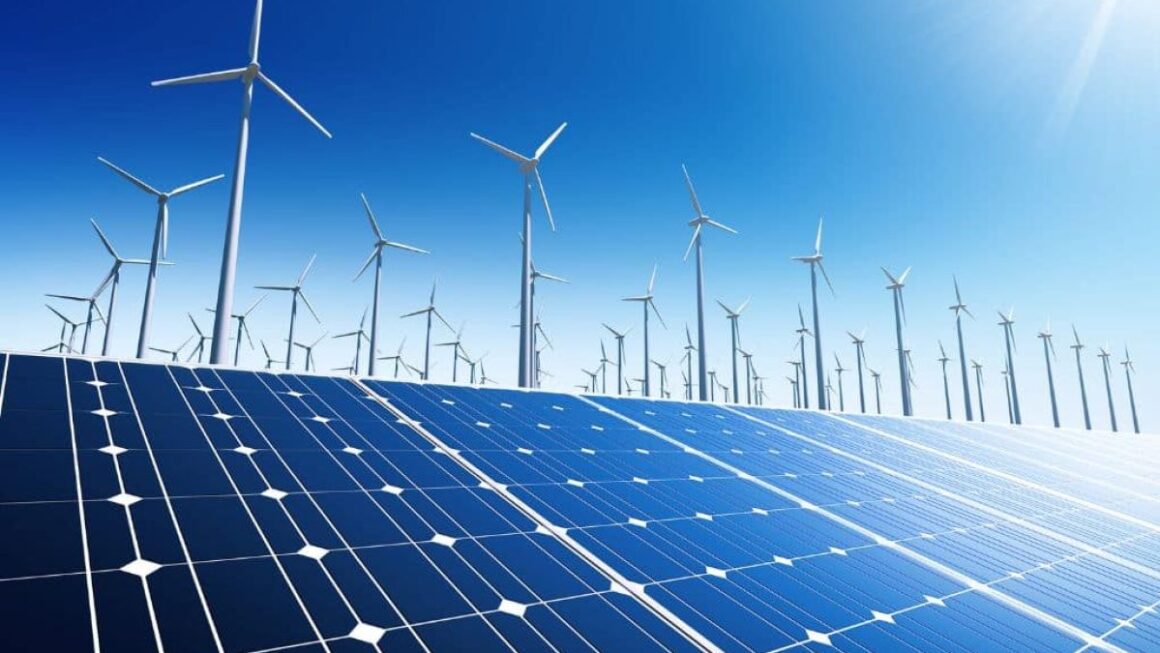As the world faces the growing challenge of climate change, the need for sustainable energy solutions has never been more urgent. Fossil fuels, which have long been the cornerstone of global energy consumption, are not only finite resources but are also major contributors to environmental degradation and carbon emissions. This realization has prompted a worldwide push toward finding and implementing alternative energy sources that are cleaner, renewable, and more sustainable.
Sustainable energy sources are crucial for ensuring the future of the planet, as they can help reduce greenhouse gas emissions, conserve natural resources, and meet growing energy demands. However, the transition from fossil fuels to renewable energy is a complex process, requiring advancements in technology, infrastructure, and policy.
In this article, we will explore the most promising sustainable energy sources for the future, including solar, wind, hydropower, geothermal, and biomass. We will examine how these energy sources work, their benefits and challenges, and their potential to power the world in the coming decades.
Solar Energy: Harnessing the Power of the Sun (Approx. 800 words)
Solar energy is one of the most well-known and widely adopted sustainable energy sources. The sun provides an enormous amount of energy—about 173,000 terawatts of solar energy reach the Earth every day, far more than the world uses annually. Solar power harnesses this energy through solar panels, which convert sunlight into electricity.
Advantages of Solar Energy:
- Abundant and Renewable: Solar energy is available nearly everywhere and can be used to generate electricity in almost any part of the world. It is an inexhaustible resource, meaning it will not run out as long as the sun shines.
- Low Environmental Impact: Solar energy has minimal environmental impact compared to fossil fuels. Once installed, solar panels produce no emissions or waste.
- Cost-Effective: Although the initial cost of installing solar panels can be high, the long-term savings on energy bills and government incentives make solar power a cost-effective choice in many regions.
Challenges:
- Intermittency: Solar energy is dependent on sunlight, so it can only be produced during the day and is affected by weather conditions. This intermittency makes solar energy less reliable without storage solutions.
- Space and Location: To capture sufficient energy, solar farms require large areas of land, and their efficiency can be reduced in areas that don’t receive much sunlight.
Future Potential: Advances in solar technology, such as solar energy storage systems and more efficient photovoltaic cells, are increasing the viability of solar power as a consistent and reliable energy source. Solar power is expected to continue growing as technology becomes cheaper and more widespread.
Wind Energy: Capturing the Power of the Wind (Approx. 800 words)
Wind energy is another leading renewable energy source, and it has been used for centuries to pump water and grind grain. Today, wind turbines convert the kinetic energy of wind into electricity, making it a crucial part of the transition to sustainable energy.
Advantages of Wind Energy:
- Renewable and Clean: Wind is an abundant and renewable resource, and wind turbines generate electricity without producing harmful emissions or pollutants.
- Low Operating Costs: After the initial investment in infrastructure, the operating costs of wind turbines are relatively low, making wind energy economically viable.
- Scalability: Wind farms can be built in a variety of locations, both onshore and offshore, and can be scaled to meet the energy needs of different regions.
Challenges:
- Intermittency: Like solar energy, wind energy is variable and cannot be relied upon 24/7. Wind speeds fluctuate, and the energy generated by wind turbines depends on wind availability.
- Visual and Noise Pollution: Some people argue that wind turbines are unsightly and noisy, which can create local resistance to their installation.
- Impact on Wildlife: Wind turbines can pose a threat to birds and bats, though technologies are being developed to minimize this impact.
Future Potential: Offshore wind farms, which have greater and more consistent wind speeds, are seen as a major growth area for wind energy. Continued improvements in turbine efficiency and storage technologies will help address the intermittency issue, making wind energy a more reliable and scalable energy source.
Hydropower: Tapping Into Water’s Potential (Approx. 800 words)
Hydropower has been used for centuries, making it one of the most established renewable energy sources. It involves harnessing the energy of flowing water, typically through dams, to generate electricity.
Advantages of Hydropower:
- Consistent and Reliable: Hydropower is a baseload power source, meaning it can generate electricity continuously, unlike solar or wind energy.
- High Efficiency: Hydropower plants are among the most efficient power plants in the world, with conversion efficiencies typically ranging from 90% to 95%.
- Storage Potential: Some hydropower plants, such as pumped storage, can store energy by pumping water to a higher elevation and releasing it when demand is high, providing an energy storage solution.
Challenges:
- Environmental Impact: The construction of dams can have significant environmental consequences, including habitat destruction and disruptions to local ecosystems.
- High Upfront Costs: Building hydropower plants, especially large-scale dams, requires significant upfront investment in infrastructure.
- Limited Suitable Locations: Suitable sites for new hydropower projects are limited, and many of the best sites have already been developed.
Future Potential: Small-scale hydropower and run-of-river systems, which have less environmental impact than traditional dams, are expected to grow. These systems allow for clean, reliable power generation without large-scale infrastructure.
Geothermal Energy: Heat Beneath Our Feet (Approx. 500 words)
Geothermal energy taps into the heat stored beneath the Earth’s surface to generate electricity or provide heating. It is a reliable and consistent energy source, as the Earth’s internal heat is virtually inexhaustible.
Advantages of Geothermal Energy:
- Sustainable and Renewable: Geothermal energy is a renewable resource, as the Earth continually produces heat.
- Low Environmental Impact: Geothermal power plants produce very low levels of greenhouse gases compared to fossil fuels.
- Constant Availability: Unlike solar and wind, geothermal energy is available 24/7, making it a reliable source of energy.
Challenges:
- Geographic Limitations: Geothermal energy is location-dependent, with the best sites found in regions with high volcanic activity or tectonic plate boundaries.
- High Initial Costs: The initial cost of drilling and setting up geothermal plants can be high, though operational costs are generally low.
Future Potential: Geothermal energy has great potential for providing sustainable energy, especially in countries with significant geothermal resources, like Iceland, the Philippines, and parts of the United States. Research into enhanced geothermal systems (EGS) may help unlock geothermal energy in areas that are not currently suitable.
Biomass Energy: From Organic Matter to Energy (Approx. 500 words)
Biomass energy involves using organic materials, such as wood, agricultural waste, or algae, to generate heat or electricity. Biomass is considered renewable because it is derived from biological sources that can be replenished.
Advantages of Biomass Energy:
- Carbon Neutral: Biomass is often considered carbon-neutral because the carbon dioxide released when it is burned is offset by the carbon absorbed by the plants during their growth.
- Waste Reduction: Biomass can be produced from waste materials, reducing the need for landfill space and helping address waste management issues.
Challenges:
- Land Use: Large-scale biomass production can require significant land area, which may compete with food production or natural habitats.
- Air Pollution: Burning biomass can produce particulate matter and other pollutants, although cleaner technologies are being developed.
Future Potential: Biomass can play a crucial role in the global energy transition, especially if combined with waste-to-energy technologies. Advanced biofuels and algae-based bioenergy have significant potential for reducing emissions and replacing fossil fuels.
Conclusion (Approx. 300 words)
As we look toward the future, the need for sustainable energy solutions has never been more pressing. Each renewable energy source, whether it is solar, wind, hydropower, geothermal, or biomass, offers unique advantages and challenges. While there is no one-size-fits-all solution, a combination of these energy sources will be key to transitioning away from fossil fuels and reducing the global carbon footprint.
Investing in the development and integration of these sustainable energy sources will be critical to addressing climate change, ensuring energy security, and fostering economic growth. With continued technological advancements, supportive policies, and greater public and private sector involvement, renewable energy will play a pivotal role in shaping a cleaner, more sustainable energy future for generations to come.



